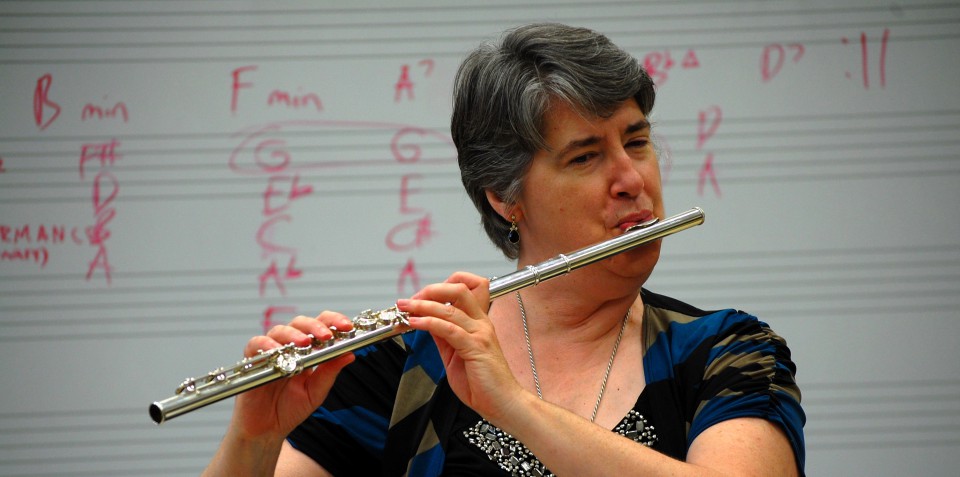 Only this week I came across a chart on a high school band website listing notes on the flute that have tuning problems with recommended fingerings for correcting pitch. It is taken from a Guide to the Understanding and Correction of Intonation Problems, Al Fabrizio, Meredith Music Publications, 1994. In looking through the chart, I realized that the advice it was giving was based on the old scale flutes that were available back in the early and mid-1990s. The scale of instruments has changed since that time. A LOT.
Only this week I came across a chart on a high school band website listing notes on the flute that have tuning problems with recommended fingerings for correcting pitch. It is taken from a Guide to the Understanding and Correction of Intonation Problems, Al Fabrizio, Meredith Music Publications, 1994. In looking through the chart, I realized that the advice it was giving was based on the old scale flutes that were available back in the early and mid-1990s. The scale of instruments has changed since that time. A LOT.
 When the modern flute was invented, the schematic of the placement of tone holes was based on a lower pitch than we play at today. “Normal” pitch in the mid-1800’s, according to Theobold Boehm, was A=435. Therefore, the schematic he created for the flute was for an instrument that played in tune at A=435. Over the rest of the 19th century and well into the 20th century, pitch has climbed to A=440 and even A=442 or in extreme cases A=444. For a really long time, the solution for getting a flute up to pitch was to make a shorter headjoint, by several millimeters over what would play in tune at A=435. The consequence of this practice was that the low register of the flute would be flat and the third octave would be sharp. The open C# would be hair-raisingly sharp. In order to have a hope of playing these flutes with short headjoints in tune, all kinds of compensating fingerings were created to correct the pitch. This included things like adding right hand fingers to lower the pitch of the C# and half-holing right hand keys. Student flutes with this older scale were widely available until fairly recently. Think old mainline American student brands, especially Armstrong, Gemeinhardt, Bundy, Artley, etc.
When the modern flute was invented, the schematic of the placement of tone holes was based on a lower pitch than we play at today. “Normal” pitch in the mid-1800’s, according to Theobold Boehm, was A=435. Therefore, the schematic he created for the flute was for an instrument that played in tune at A=435. Over the rest of the 19th century and well into the 20th century, pitch has climbed to A=440 and even A=442 or in extreme cases A=444. For a really long time, the solution for getting a flute up to pitch was to make a shorter headjoint, by several millimeters over what would play in tune at A=435. The consequence of this practice was that the low register of the flute would be flat and the third octave would be sharp. The open C# would be hair-raisingly sharp. In order to have a hope of playing these flutes with short headjoints in tune, all kinds of compensating fingerings were created to correct the pitch. This included things like adding right hand fingers to lower the pitch of the C# and half-holing right hand keys. Student flutes with this older scale were widely available until fairly recently. Think old mainline American student brands, especially Armstrong, Gemeinhardt, Bundy, Artley, etc.
Fortunately, there has been a revolution in flute making brewing from the mid-20th century started by flute makers and players including Albert Cooper, Eldred Spell, Trevor Wye, William Bennett and even James Galway to bring the schematic of the flute up to modern pitch. Most every flute made today, by every reputable manufacturer, at every price point, has a scale that has its basis in the work of these pioneering flute makers and players. Many of the old compensating fingerings are unnecessary and even undesirable with a modern scale. The first and second octaves are now in tune, and only minor adjustments are needed in the third octave.
The C# is still an issue, but not because it isn’t in tune. It is more because it is the shortest tube and therefore the most bendable pitch. It also reveals the player’s expertise in focusing and directing the air correctly. If the C# sounds high, it means that the blowing angle is too shallow. It is absolutely true that if you can fix the pitch and tone quality of the C#, you will vastly improve the tone and intonation on the rest of the flute. More on tone, tuning and C# in another post.
If you find these entries useful, please subscribe, share with your colleagues and come back regularly. Feel free to comment. If you have a topic you would like to see explored more fully, you can contact me via IM/Messenger on Facebook or email me at dr_cate@sbcglobal.net. For information about clinics, workshops and performances, click here

Pingback: Flute Pitch Tendencies | Rachel Taylor Geier
Pingback: All about the Headjoint Cork | Dr. Cate's Flute Tips